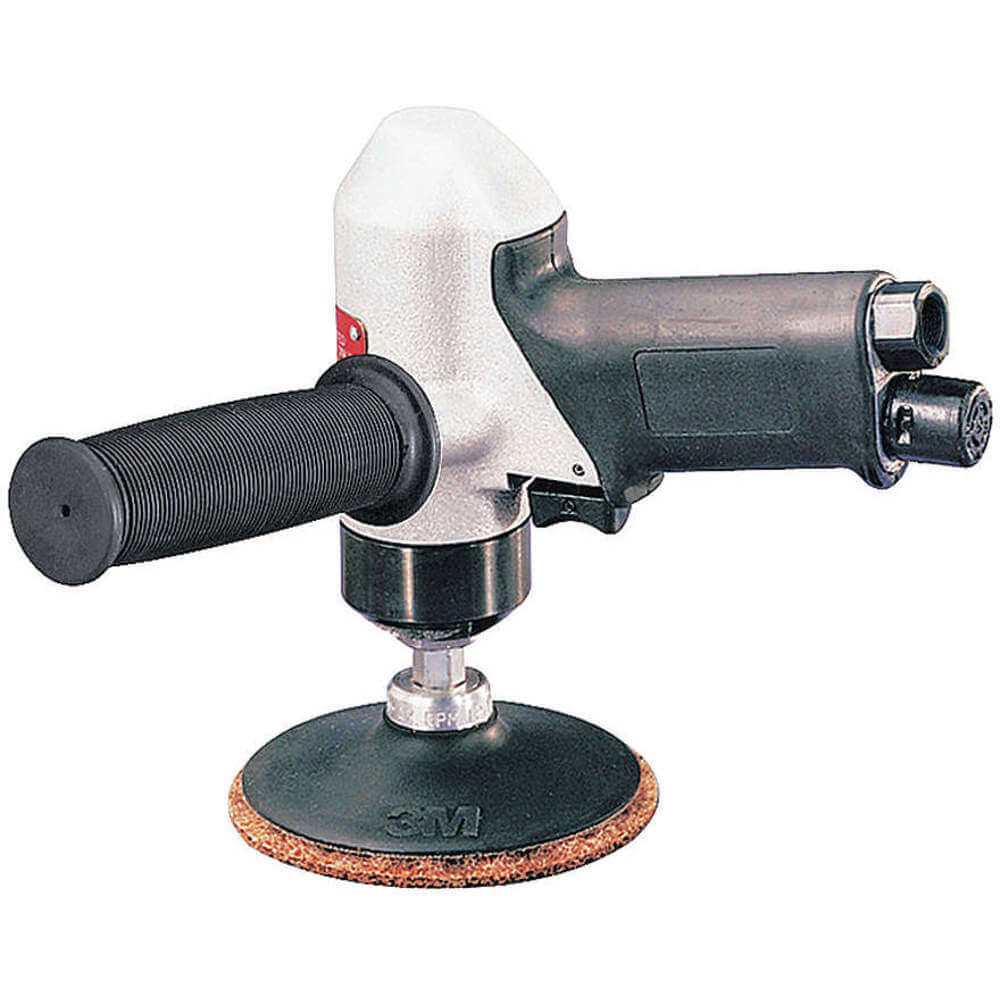 A
A B
BAir Inlet: 1/4" NPT , Average CFM @ 15 Second Run Time: 8 , CFM @ Full Load: 32 , Duty: Industrial , Exhaust Type: Rear , Free Speed: 11,000 rpm , HP: 0.7 , Min. Hose Size: 3/8" , Overall Length: 6.625" , Required Pressure: 90 psi , Variable Speed: No
Features
- They utilise a 0.7 hp motor that allows spot sanding and finishing applications with a speed rating of up to 11000 rpm. This gearless motor also reduces maintenance and downtime.
- Their pistol grip allows improved operator comfort and the rear exhaust helps to direct debris away from the workspace.
- They are governor controlled to maintain speed under heavy load and include a removable side handle that can be easily locked / removed depending on the use.
- These free-speed air disc sanders also include a locking-type pad for smooth operation and minimal tool vibration.
- Dynabrade 50321 disc sander comes with a disc pad assembly that accommodates slotted centre-hole abrasive discs for ultra-smooth finishing.
Frequently Asked Questions
What is the function of the trigger throttle?
The throttle is a pressure-sensitive device that increases rotational speed when pressure is applied to it. When the pressure is removed, the operation of the tool stops.
How to remove and mount the disc pad to the air disc sander?
- Disconnect the air line from the sander.
- Remove the old disc pad from the sander by inserting the wrench (supplies with the tool) between the rubber shroud and the disc pad. Use the wrench to secure the sander spindle while turning the disc pad counter-clockwise.
- After removing the disc pad, inspect the threaded hole in the spindle to ensure that the threads are free of debris and undamaged.
- Ensure that the phenolic washer is in place around the threaded shaft of the new disc pad.
- Secure the sander spindle with the wrench and tighten the new disc pad securely to the tool.
What is the correct method for sanding with a disc sander?
Always sand the surface on the downward side of the disc while using the disc portion of the tool. Sanding on the upward side of the disc can cause the workpiece to fly up and cause damage.
 Change Country
Change Country
